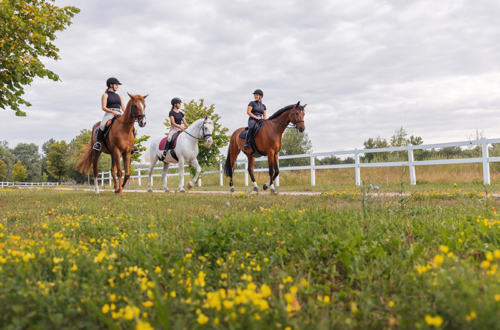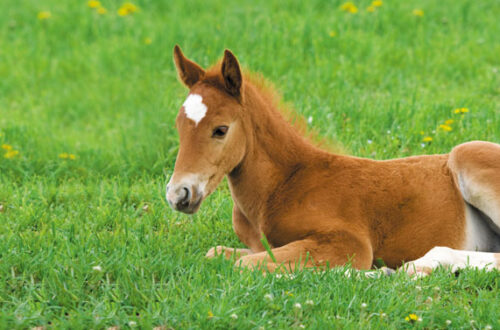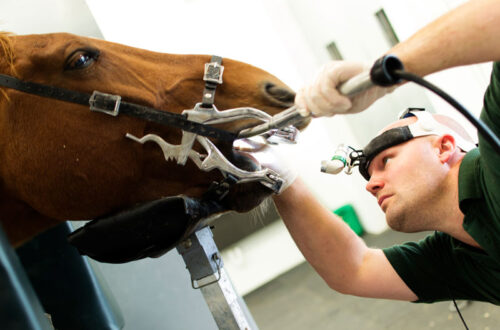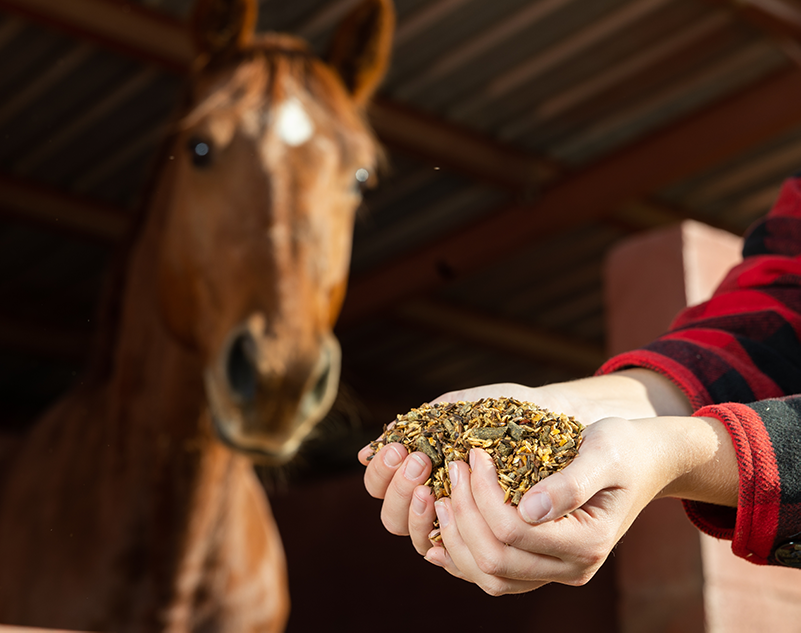
How to Change Your Horse’s Nutrition to Suit Workload
Changing a horse’s nutrition to suit his workload will depend on what kind of work he is in and the quality of the forage available.
By Chistina Reynolds, Triple Crown Nutrition, the Official Feed Sponsor of USPC
All horses have a diet centered on forage since they have evolved over the years to be grazers, or trickle-feeders, which means they take in relatively small amounts of high-fiber plants for a large part of each day. Horses spend 10 to 17 hours grazing daily, and good horse management reflects a similar set-up. Horses should have access to forage (hay and grass) for most of the day. All forages, no matter how nice, are going to be deficient in some nutrients. Most are deficient in a couple of essential minerals, like copper and zinc and vitamins A and E. Some are deficient in protein and calories for certain horses. We can account for the missing part of the diet with a supplemental feed or concentrate that will provide the nutrients that are missing in the forage. A forage analysis or hay test will tell you exactly what your specific forage provides. But even without an analysis, we can make some general assumptions about what the concentrate portion of the diet needs to provide.
Easy Keepers
For horses who don’t require a lot of calories beyond what their forage is providing, a very concentrated source of nutrition called a ration balancer will usually meet all their needs. These products are designed to be fed at a very low rate, usually 1–2 pounds per day per 1,000 pounds of bodyweight. Ration balancers contain all the essential amino acids, protein, minerals, and vitamins that are missing from the forage portion of the diet. Many horses, ponies, and donkeys thrive on this simple addition to their diet.
Moderate to Hard Keepers
For horses (and some ponies) who require more calories than is provided by their forage, a “regular” feed will provide the amino acids, vitamins, and minerals that are missing from the forage in addition to the energy (calories) they need to maintain condition. Most commercial feeds have a minimum feeding rate of about 5 pounds per day to meet their vitamin and mineral needs. Choosing a feed with the right calorie content for your specific animal will ensure they get enough feed to meet their vitamin and mineral needs without becoming over or underweight.
Increasing a Horse’s Workload = Change to Nutrition
When we put a horse or pony into a training or conditioning program, the nutrition he needs may increase from what he needs when he is idle, and this will depend on the overall workload. The National Research Council (NRC) provides useful information about nutrient needs at all life stages and workloads. Many horses going from idle to light or even moderate work have very little change in their needs. However, all of them are individuals and observing the horse in front of you will help guide you as to whether they require more calories as their workload increases.
Understanding body condition scoring (BCS) is very helpful to watch trends over time. The Henneke Body Condition Scoring Guide scores horses and ponies from 1 (poor) to 9 (extremely fat) and works for all body shapes and breeds. As a rule of thumb, most horses should be around a 5 on the scale, and that means you should be able to feel the equine’s ribs but not see them. You can also track a horse’s actual weight as he increases work using a livestock scale or weight tape. Some horses will require more calories as their energy expenditure increases. There’s several ways you can meet their new needs.
If a horse is not already getting free-choice forage, you can increase his grass access or hay amount. You can add in a higher-quality hay, meaning one that’s higher in calories or more easily digestible, either with regular baled hay or something like hay cubes or chopped forages. You could also increase calories by increasing the amount of concentrate he is getting or feed him a concentrate that gives more calories per pound by providing a feed higher in fat.
Depending on your management options and budget, there’s a good option for everyone. Working with your county’s extension agent, an equine nutritionist, or an industry feed specialist, in addition to your veterinarian, can help you navigate options.
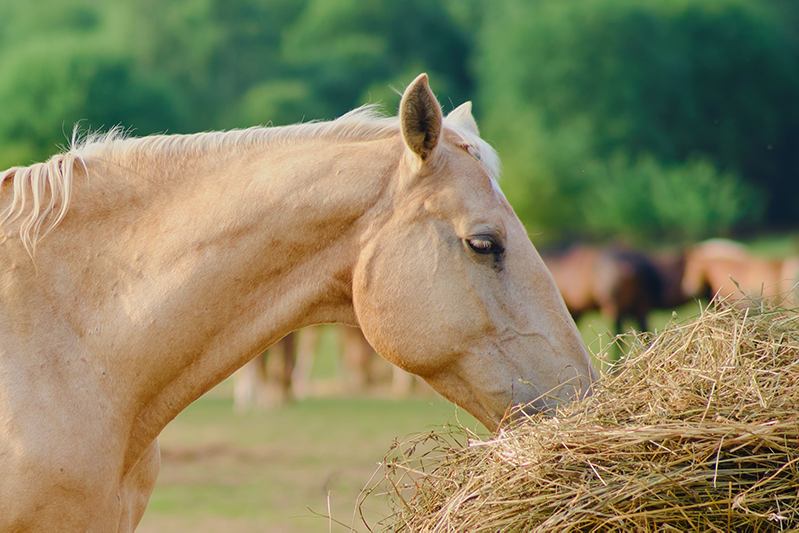
Rest Periods
Rest is very important for your equine athlete. Rest is where the body repairs damage, strengthens tissues, and gains fitness. When you’re planning for rest within your horse’s fitness program, nutrition plays a role there, too. Most horses are not going to need a change in their daily feeding plan for a regular rest period of less than a week, as long as the original plan met all of that particular horse’s requirements.
When a horse or pony has a longer rest, it may be appropriate to change his daily intake. The caloric needs could decrease if he was in a heavier workload, or they may remain the same if the horse is a year-round easy keeper. Knowing your individual animal will help guide you, as well as watching his body condition score as hespends time on rest.
Choosing a hay that meets your horse’s caloric needs without requiring restriction is helpful for avoiding ulcers and vices. I like being able to feed an appropriate hay in slow-feed nets to provide as close to 24/7 access as possible. For some horses, this may mean swapping to a lower-calorie hay or one that is less digestible and requires more time to chew.
Sometimes weighing a horse’s regular hay and splitting it into multiple meals fed in a net is enough to keep him from getting over-conditioned but still provides the benefits of grazing behavior. For horses on pasture rest, choosing a pasture with the right balance of grass for your specific horse allows him to maintain condition.
If the pasture is too lush for your horse, add a grazing muzzle to allow him to stay on turnout while decreasing his caloric intake enough to maintain a healthy body condition. For turnout without enough grass to maintain condition, feeding supplemental hay provides additional calories to avoid weight loss.
Take Home Messages
- Ensure you’re feeding a forage-based diet that meets your individual horse’s or pony’s needs.
- Changing workloads can mean changing the diet, but not always.
- Understanding body condition score can help guide your decisions about caloric intake.
- Rest is critical for repairing damage, strengthening tissues, and increasing fitness. Providing the right nutrients ensures the body has the building blocks to be able to do that.
- There are industry professionals available to help you make plans and decisions about how to feed your individual horse or pony during all phases of exercise and rest.
This article on How to Change Your Horse’s Nutrition to Meet Workload was originally published in the 2024 Spring issue of Discover USPC magazine. Read more content from that issue.

About Triple Crown Nutrition — Official USPC Feed Sponsor
Triple Crown offers premium equine feeds that provide the exact nutrition your horse needs, designed to help support immunity and gut health. Learn more at TripleCrownFeed.com.



